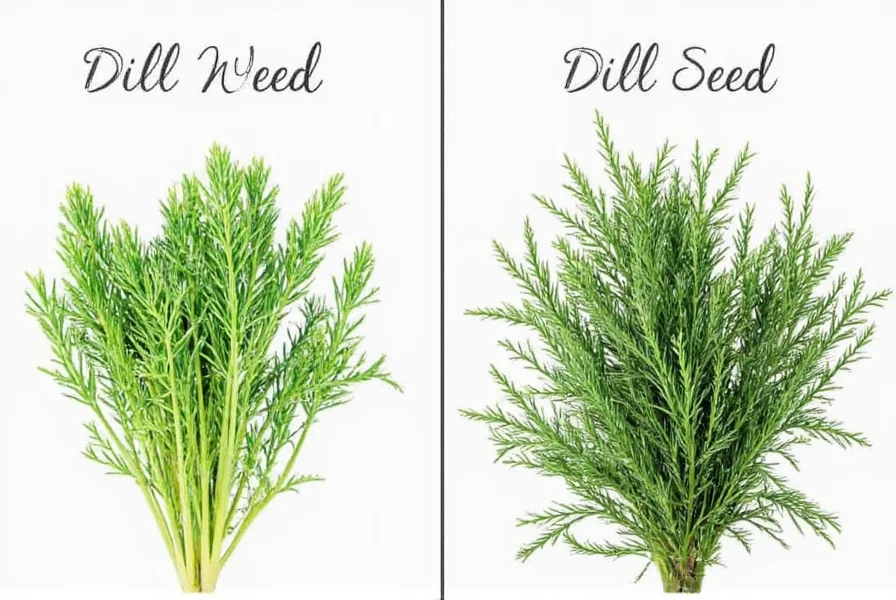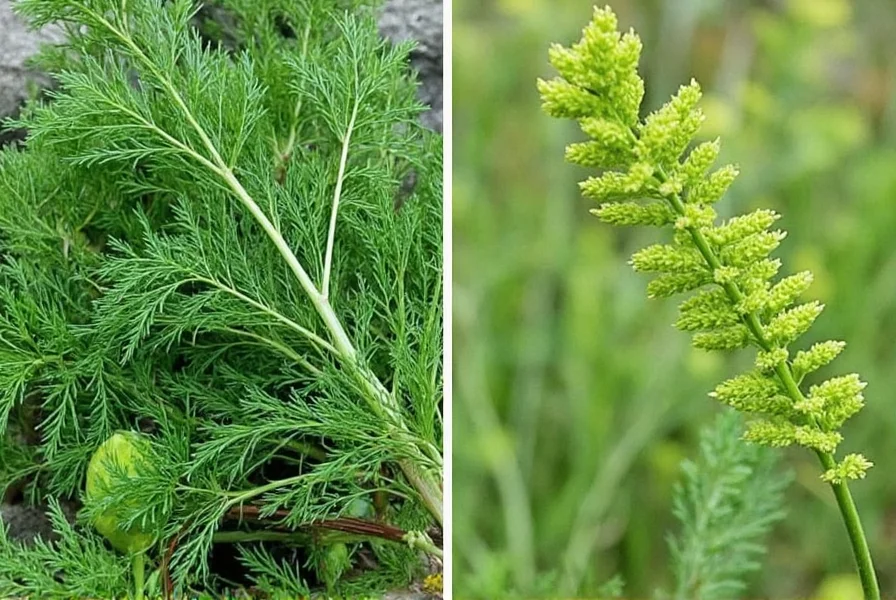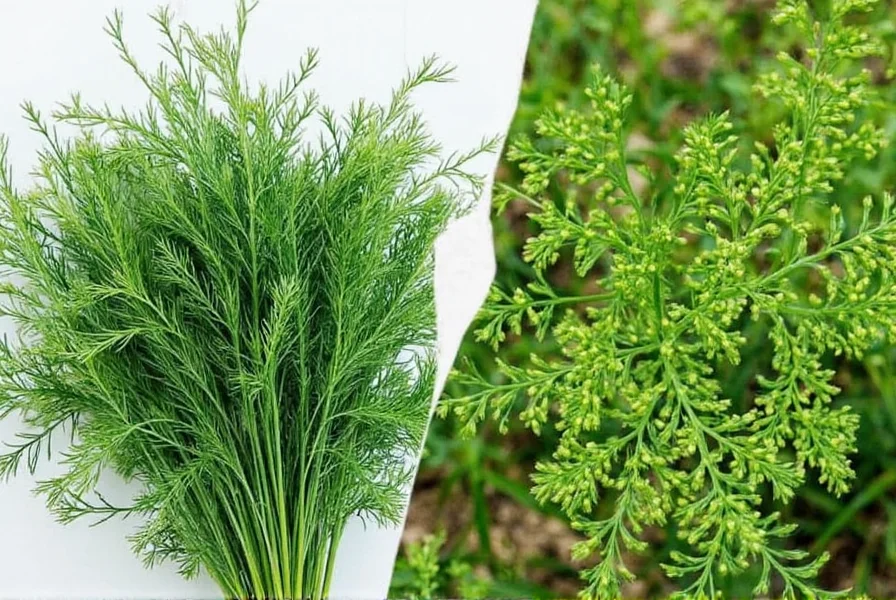Understanding the difference between dill weed and dill seed is essential for home cooks and culinary enthusiasts. Though both come from the same herb plant, they represent different growth stages and offer unique flavor profiles that significantly impact dish outcomes. This comprehensive guide explains their botanical origins, flavor characteristics, and proper usage in cooking.
What Exactly Are Dill Weed and Dill Seed?
Dill weed describes the feathery green leaves and tender stems of the dill plant, harvested before flowering. Chefs use fresh dill weed throughout the growing season and dried dill weed as a shelf-stable alternative. In contrast, dill seed develops after the plant flowers and sets seed—small, oval, brownish-yellow fruits that contain the plant's essential oils in concentrated form.
| Characteristic | Dill Weed | Dill Seed |
|---|---|---|
| Plant Part | Leaves and stems | Mature seeds |
| Harvest Time | Before flowering (spring/summer) | After flowering (late summer) |
| Flavor Profile | Fresh, grassy, slightly citrusy | Stronger, earthy, caraway-like, with citrus notes |
| Texture | Delicate, leafy | Hard, small seeds |
| Common Uses | Fish dishes, salads, dips, dressings | Pickling, breads, stews, spice blends |
Flavor Differences That Matter in Cooking
The flavor distinction between dill weed and dill seed represents the most critical difference for culinary applications. Fresh dill weed offers a bright, delicate flavor reminiscent of anise with citrus undertones—perfect for dishes where subtlety matters. Dill seed, however, delivers a more intense, earthy taste with pronounced caraway notes and less citrus brightness. This fundamental flavor difference explains why substituting one for the other often disappoints.
When exploring can I substitute dill weed for dill seed in recipes, consider the dish's flavor profile. For delicate fish preparations or creamy dips, dill weed's gentle flavor shines. Dill seed's robust character works better in pickling brines, hearty stews, or bread recipes where its stronger flavor can penetrate other ingredients.

Culinary Applications: When to Use Each
Understanding when to use dill weed instead of dill seed prevents recipe failures. Fresh dill weed excels in applications where its delicate flavor won't get lost:
- Finishing touch for cold soups like borscht
- Tzatziki and other yogurt-based dips
- Salmon and other delicate fish dishes
- Vinaigrettes and salad dressings
- Vegetable salads, especially cucumber salads
Dill seed's stronger flavor makes it ideal for:
- Pickling cucumbers and other vegetables
- Bread recipes, particularly rye and sourdough
- Bean and lentil dishes
- Stews and braises that benefit from longer cooking
- Spice blends like dreher (Austrian spice mix)
Substitution Guidelines for Home Cooks
While dill weed and dill seed aren't direct substitutes, understanding dill seed vs dill weed conversion helps when one ingredient is unavailable. As a general rule:
- 1 tablespoon fresh dill weed ≈ 1 teaspoon dried dill weed
- 1 teaspoon dill seed ≈ 2 tablespoons fresh dill weed (but flavor won't be identical)
When substituting between the two forms, remember that dill seed's stronger flavor means you'll need less quantity, but the flavor profile will differ significantly. For pickling recipes specifically designed for dill seed, substituting dill weed typically yields disappointing results as the seeds provide essential flavor compounds that leaves lack.

Growing and Harvesting Your Own Dill
Gardeners can harvest both dill weed and dill seed from the same plant with proper timing. For optimal dill weed production, harvest leaves when the plant reaches 6-8 inches in height, cutting stems just above leaf nodes to encourage bushier growth. For dill seed collection, allow the plant to flower and develop seed heads, then harvest when seeds turn from green to brown.
Understanding dill plant parts explained helps maximize your harvest. The entire dill plant offers culinary value: tender young leaves make the best dill weed, while mature seed heads provide dill seed. Some varieties like 'Bouquet' dill produce abundant seeds, while 'Fernleaf' focuses more on leaf production.
Storage Tips for Maximum Freshness
Proper storage preserves each form's distinctive qualities. Treat fresh dill weed like delicate herbs: wrap in slightly damp paper towels and store in an airtight container in the refrigerator for up to one week. For longer storage, freeze dill weed in ice cube trays with water or oil.
Dill seed requires different handling. Store in an airtight container away from light and heat. Properly stored, dill seed maintains peak flavor for 1-2 years, though it remains safe indefinitely. For maximum flavor, toast dill seeds briefly in a dry pan before use to release essential oils.
Common Misconceptions Clarified
Many home cooks mistakenly believe fresh dill vs dill seeds are interchangeable forms of the same ingredient. While related, they're distinct culinary components. Another misconception suggests dried dill weed equals dill seed—this isn't true, as dried dill weed still comes from the plant's leaves, not its seeds.
Understanding these differences prevents recipe failures, especially in traditional dishes like Scandinavian gravlax (which requires fresh dill weed) or German dill pickles (which rely on dill seed's specific flavor profile).
Frequently Asked Questions
Can I substitute dill weed for dill seed in pickling recipes?
While possible in a pinch, substituting dill weed for dill seed in pickling recipes isn't recommended. Dill seed provides essential flavor compounds that dill weed lacks, resulting in pickles with significantly different flavor profiles. For authentic dill pickles, dill seed is irreplaceable.
Which has stronger flavor: dill weed or dill seed?
Dill seed has a significantly stronger, more concentrated flavor than dill weed. The seeds contain higher concentrations of essential oils, delivering an earthier, more pungent taste with caraway-like notes, while dill weed offers a fresher, more delicate flavor profile.
How do I grow dill for both weed and seed production?
Plant dill in full sun with well-draining soil. Harvest leaves regularly for dill weed production early in the season. Allow some plants to flower and set seed for dill seed collection. Varieties like 'Bouquet' excel at seed production, while 'Fernleaf' focuses more on leaf growth. Remember that dill readily self-seeds, so you may get volunteer plants next season.
Does dried dill weed taste the same as fresh dill weed?
Dried dill weed has a more concentrated but slightly different flavor than fresh. The drying process diminishes some of the bright citrus notes while intensifying certain earthy characteristics. Use one-third the amount of dried dill weed when substituting for fresh (1 teaspoon dried = 1 tablespoon fresh) and add it earlier in the cooking process.











 浙公网安备
33010002000092号
浙公网安备
33010002000092号 浙B2-20120091-4
浙B2-20120091-4